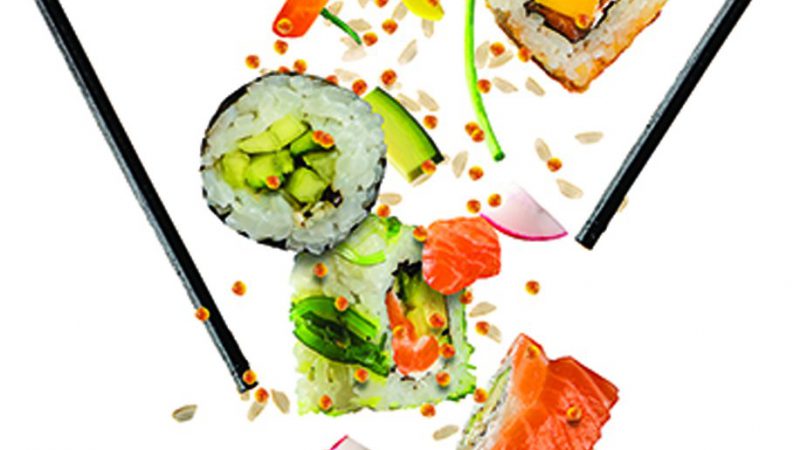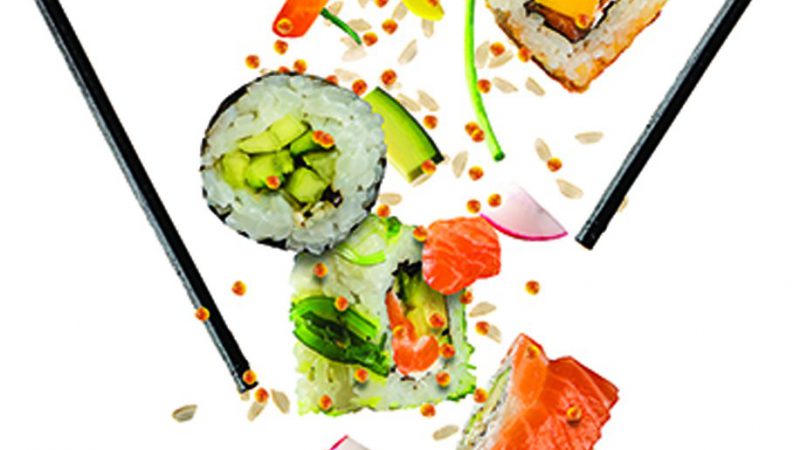May I Have a Fork?
Mastering chopsticks requires more than dexterity – you need to be culturally adroit, too
February 28, 2019


Sharing a meal is a prerequisite for closing a deal in many parts of the world, and dining etiquette can differ even within regions. If you’re a frequent business traveler to Paris, you probably hold your fork in your left hand, tines down, during a formal dinner. And when you visit the Middle East or India, you know to only use your right hand when eating. But the protocol for utensils in Seoul or Shanghai can be confusing, so we’re going to cover that particularly iconic part of Asian culture – chopsticks.
Chopsticks
At Asian restaurants, watch how other diners pick up their chopsticks. They don’t grab at their utensils, transferring them between two hands like batons. The trick is to let your right hand drift gracefully towards the chopsticks. Turn your hand slightly counterclockwise, so your thumb points downwards and back towards your body. Then gracefully grasp the blunt ends of the chopsticks, and as you smoothly rotate your wrist again, they will swing into the correct position! Smooth! Refined! Bond, James Bond.
Size doesn’t matter: Sizes and types of chopsticks vary. They may be wooden or metal, angular or smooth, twig-like and connected at the base, or engraved, shellacked and wrapped in a beautiful packet. Along with all these disparities, there are many chopstick faux pas. The following list contains ONE acceptable behavior, and seven Chopstick Taboos. Can you identify the polite move?
a. Passing food from your chopstick to another diner’s chopstick.
b. Gesturing, tapping, or spearing food with your chopsticks.
c. Sticking your chopsticks straight up in your rice bowl.
d. Repeatedly rubbing the large ends of your chopsticks together after you’ve split them apart.
e. Turning your chopsticks around and using the large ends to serve yourself from communal plates.
f. Licking the tips of your chopsticks
g. Setting your chopsticks down flat on the table.
h. Leaning your chopsticks off the edge of your plate.
ANSWER: E. If you are helping yourself from a communal platter or bowl, there may be large chopsticks or a serving spoon available. But if not, then use the blunt end of your chopsticks to transfer a small portion of food onto your plate. Be sure not to load your plate with a large amount all at once, or eat just your favorite dishes either. In both cases, you will appear greedy.
Why are the other answers wrong?
A. Traditionally, the only time when two people hold a single item with their chopsticks is during a funeral, when relatives may pass the remaining bones of cremated ancestors to each other. Obviously, you should avoid this gesture while dining.
B. All these gyrations are rude.
C. This visual reminds many Asians of the joss incense sticks used during ceremonies for ancestors who have passed.
D. If you rub your chopsticks together too much, it implies you think they are cheap, which may embarrass other diners.
F. This behavior, (naburi-bashi in Japanese), is distasteful for all present.G and H are both similarly inappropriate in the US. Either balance your chopsticks on top of your plate, or lean them on your chopstick rest.
Additionally, you should never separate your chopsticks as if they were a knife and fork, and set them on either side of your plate. Nor should you cross them in an “X” formation. (The latter is a non-verbal signal in the West to let the wait staff know that you are not finished with your meal.)Flat-Bottomed SpoonsWhy is the bottom flat on Asian spoons? It is not simply to stack nicely, or to give you more room for noodles and broth. The engineering answer is apparently that if the base is flat, and you hold it momentarily over your bowl, the odds of it dripping onto the table (or onto you) are less than with a round-bottomed western spoon.Neatly consuming soup, noodles and dim sum with both a spoon and chopsticks can be challenging. But there are millions of executives in business suits who slurp noodles and soup every day – and still remain immaculate.
No sharp implements: Unlike in Texas, you rarely get a steak knife with your dinner in China. Why? It is said that Confucius wanted knives eliminated at the table because he equated them with acts of aggression – and they would disturb the tranquility of the meal.
Whatever your ethnicity, learning to use chopsticks increases your dexterity – which may correlate to other skills, like calligraphy or neurosurgery. And it will help you avoid being the only one at your table in Tokyo pleading for a fork.
Terri Morrison is a speaker and co-author of nine books, including Kiss, Bow or Shake Hands: The Bestselling Guide to Doing Business in More Than Sixty Countries, and her newest book, Kiss, Bow or Shake Hands: Courtrooms to Corporate Counsels. She is president of Getting Through Customs, developers of Kiss Bow or Shake Hands Digital – available through McGraw-Hill. TerriMorrison@kissboworshakehands Twitter @KissBowAuthor. Tel (610) 725-1040. Visit www.kissboworshakehands.com , and join the Kiss, Bow or Shake Hands Group on LinkedIn!




